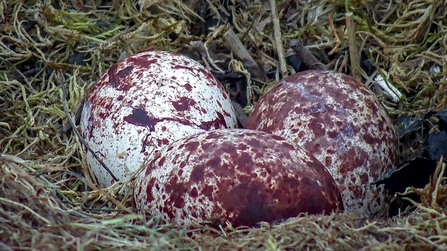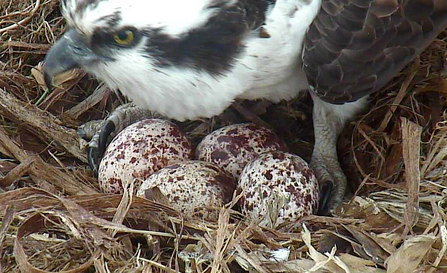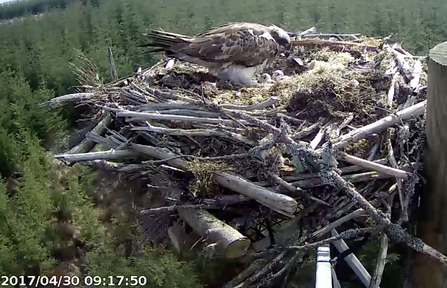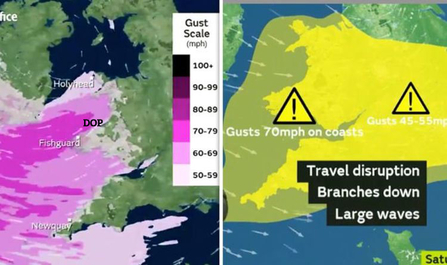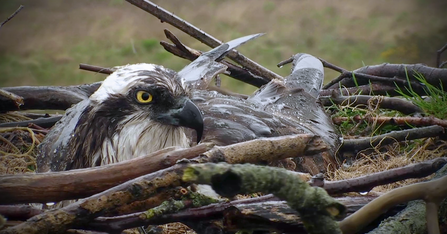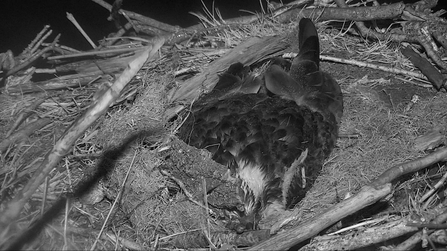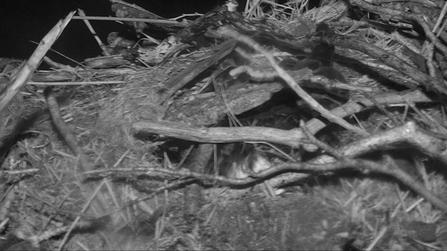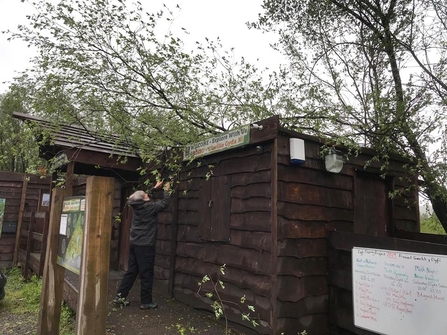Easter this year was the hottest on record.
Fast forward eggsactly a week and we experienced a ferocious Storm Force 10 weather event on the Dyfi with temperatures down to freezing and winds gusting over 80mph. And our friends overseas wonder why the Brits are always talking about the weather!
By Friday afternoon we knew that Telyn's clutch this year was going to be three eggs - same as last year.
A trio of eggs again in 2019

